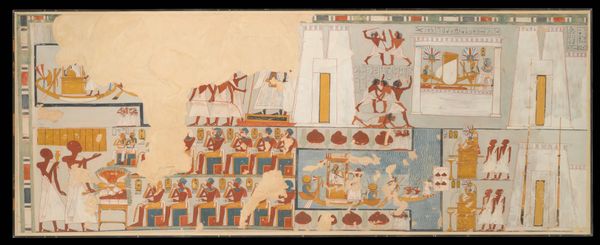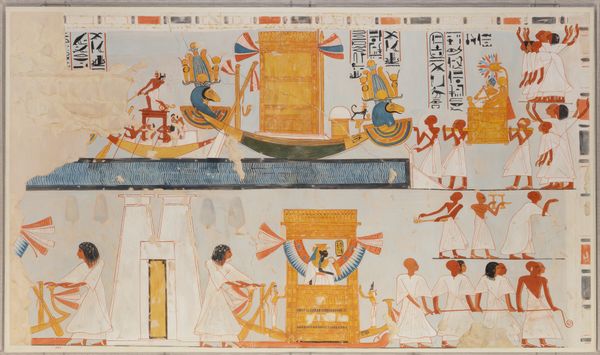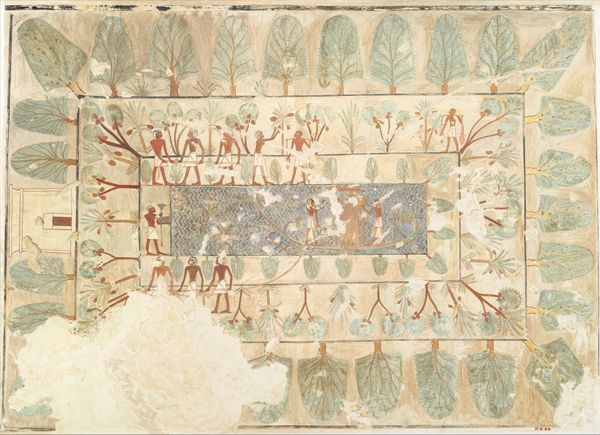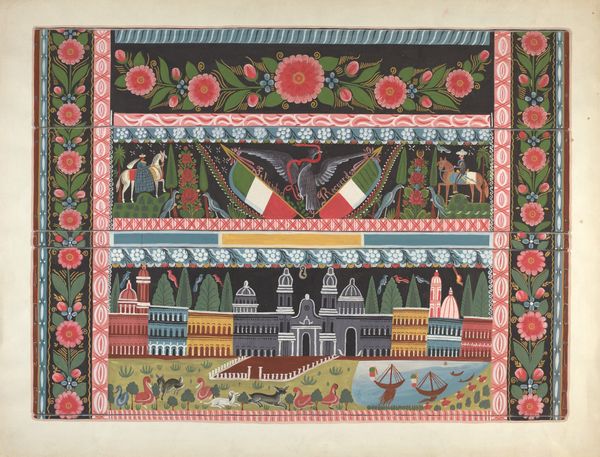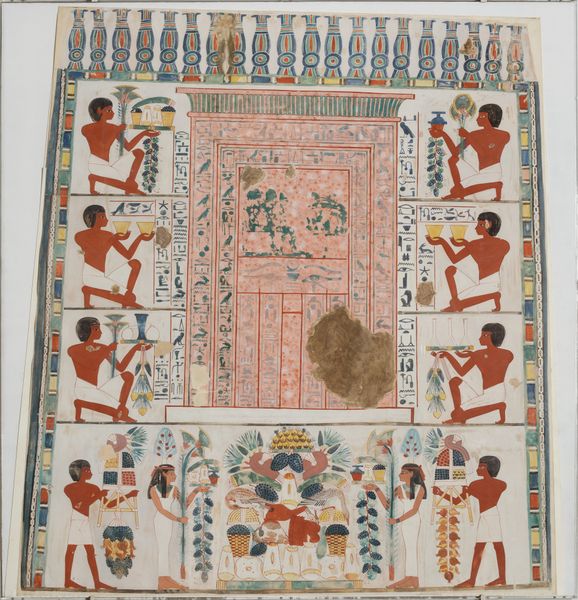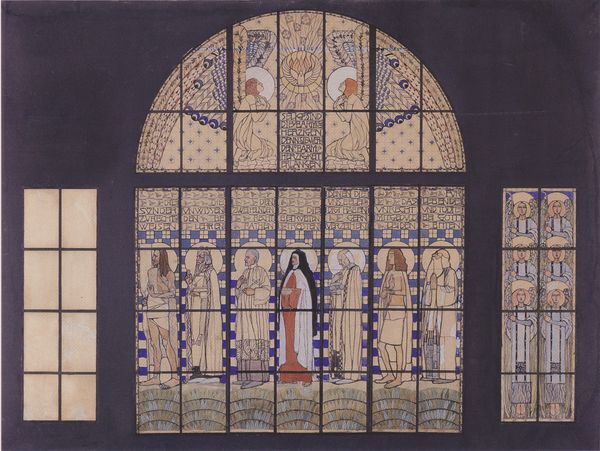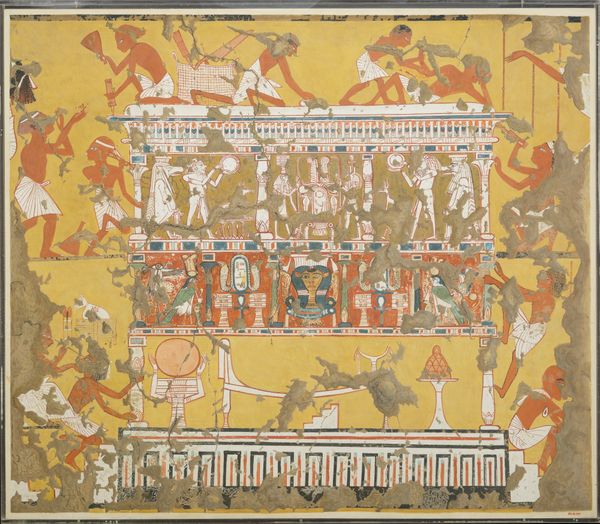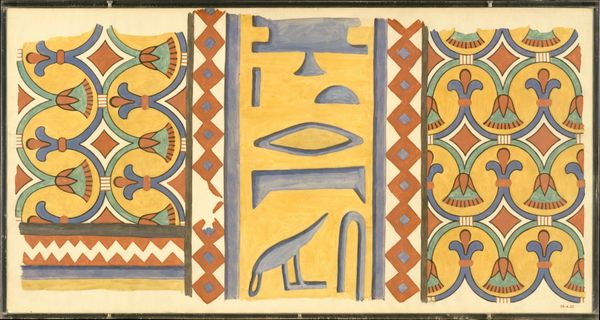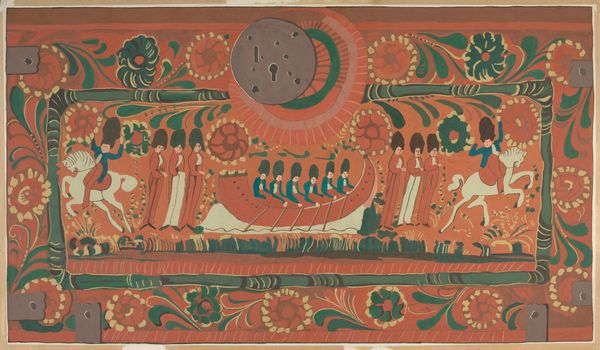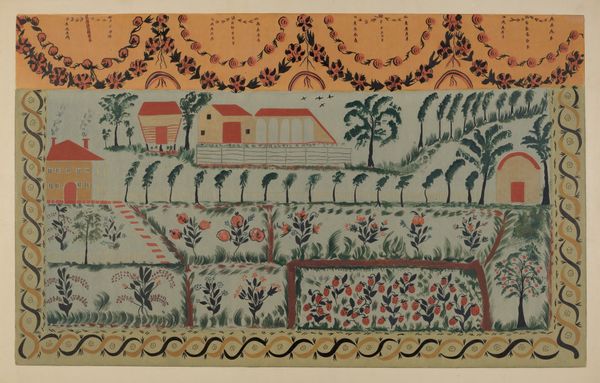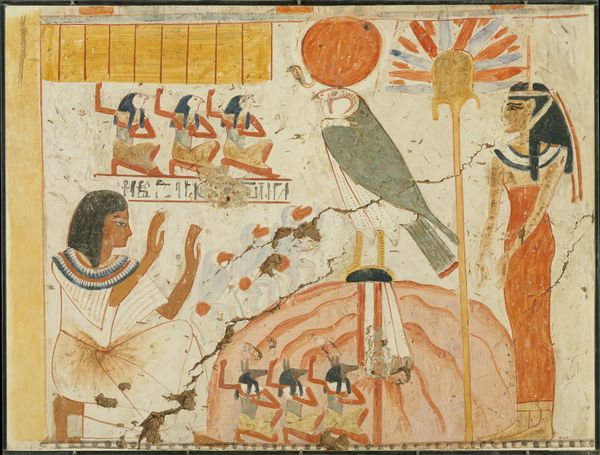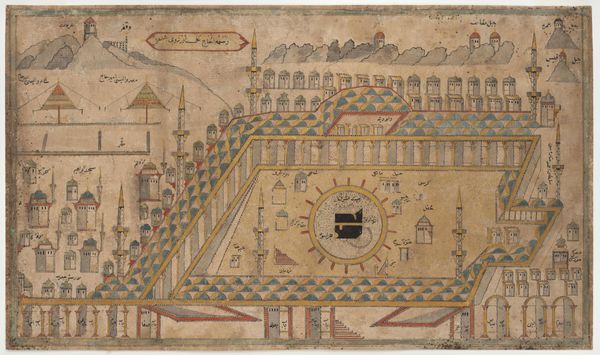
Funeral Ritual in a Garden, Tomb of Minnakht 1479 BC
0:00
0:00
fresco, mural
#
water colours
#
landscape
#
ancient-egyptian-art
#
fresco
#
egypt
#
ancient-mediterranean
#
wall painting
#
history-painting
#
mural
#
watercolor
Dimensions: facsimile: h. 71.4 cm (28 1/8 in); w. 122 cm (48 1/16 in) scale 1:1 framed: h. 73.3 cm (28 7/8 in); w. 128.6 cm (50 5/8 in)
Copyright: Public Domain
Curator: We're looking at "Funeral Ritual in a Garden, Tomb of Minnakht," a wall painting that dates back to 1479 BC. It was originally found in the Tomb of Minnakht and is now held in the collection of the Metropolitan Museum of Art. The artwork presents a formal garden surrounding the tomb owner's residence, complete with offerings and scenes of the funerary procession. Editor: My first impression? It's like a carefully planned stage set for the afterlife. Everything’s so neatly arranged, so symbolic. A little like stepping into someone’s very organized dream. There’s almost something playful in the repetition of the trees and the carefully staged scenes. Curator: Absolutely. This is not a naturalistic representation of a garden. It's a highly stylized depiction designed to ensure the deceased's comfort and continued prosperity in the afterlife. Note how the garden is structured, how each scene is segmented and the focus placed on funerary processions as well as sustenance preparation. The offering and food preservation sections were vital to provide the Ka, or soul, of Minnakht with continued sustenance. Editor: The detail of the boats in their dedicated frames! Do you think those represent voyages the deceased took during life, or purely journeys in the spiritual realm? There is this one that depicts what looks like Minnakht in front of the shrine on a papyrus skiff and the boat with oars and steering looks ready to start their trip. Curator: The journey by boat had strong ties with funeral symbolism within ancient Egypt. Often associated with crossing the Nile into the afterlife and traveling along to see important figures. There's an element of both commemoration and aspiration present. These wall paintings also served as statements of the status and the life of the interred, providing for an active social life for eternity. Editor: The colors are so fresh still. Did they truly believe that representing these scenes so vividly would bring them to life, literally? And the order is amazing – how well is planned the scenes flow despite each been in a "box". It is like their spirit demanded clarity and it delivered. Curator: It reflects the ancient Egyptian worldview, which sought to ensure cosmic and social order through these symbolic representations. So, it was less about 'bringing to life' in our sense, and more about actively maintaining that eternal order, providing what they needed but showcasing all aspects to deities that visited this place. Editor: So much detail in something so old, yet so well presented for what they want, from offerings to the afterlife, status and achievements while among the living. Incredible! Curator: Indeed. It serves as a rich visual source for understanding ancient Egyptian beliefs. A snapshot in time that holds far more information about a life, afterlife, and a culture long passed.
Comments
No comments
Be the first to comment and join the conversation on the ultimate creative platform.
